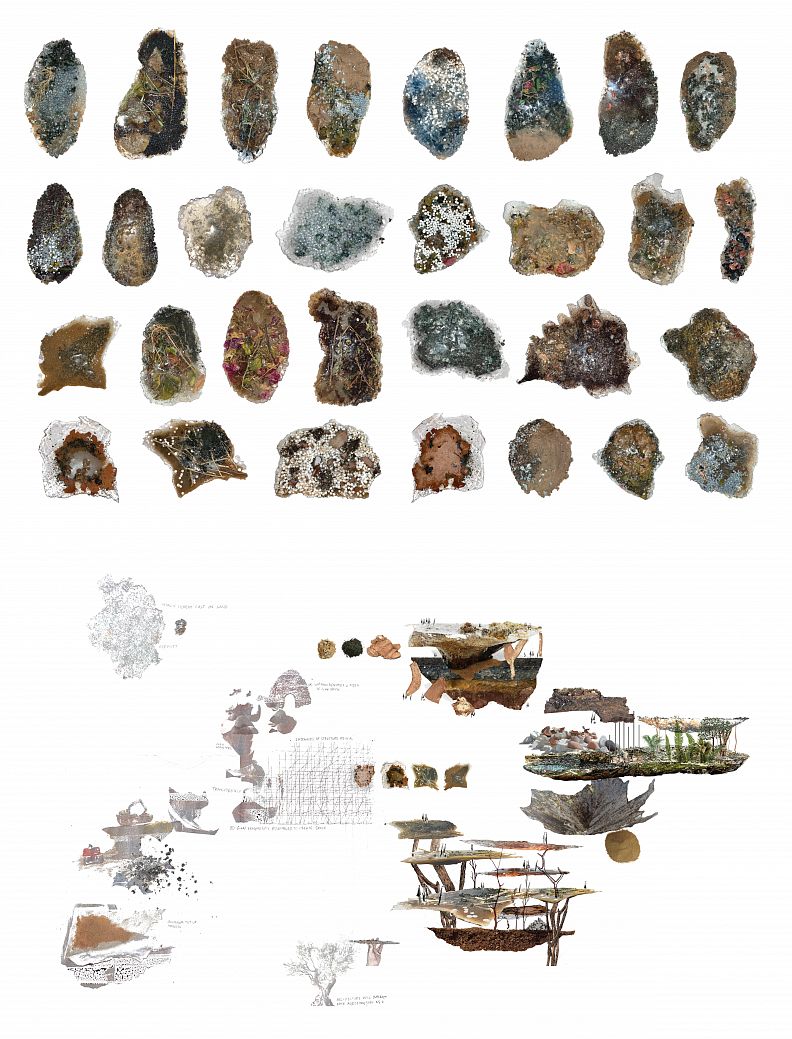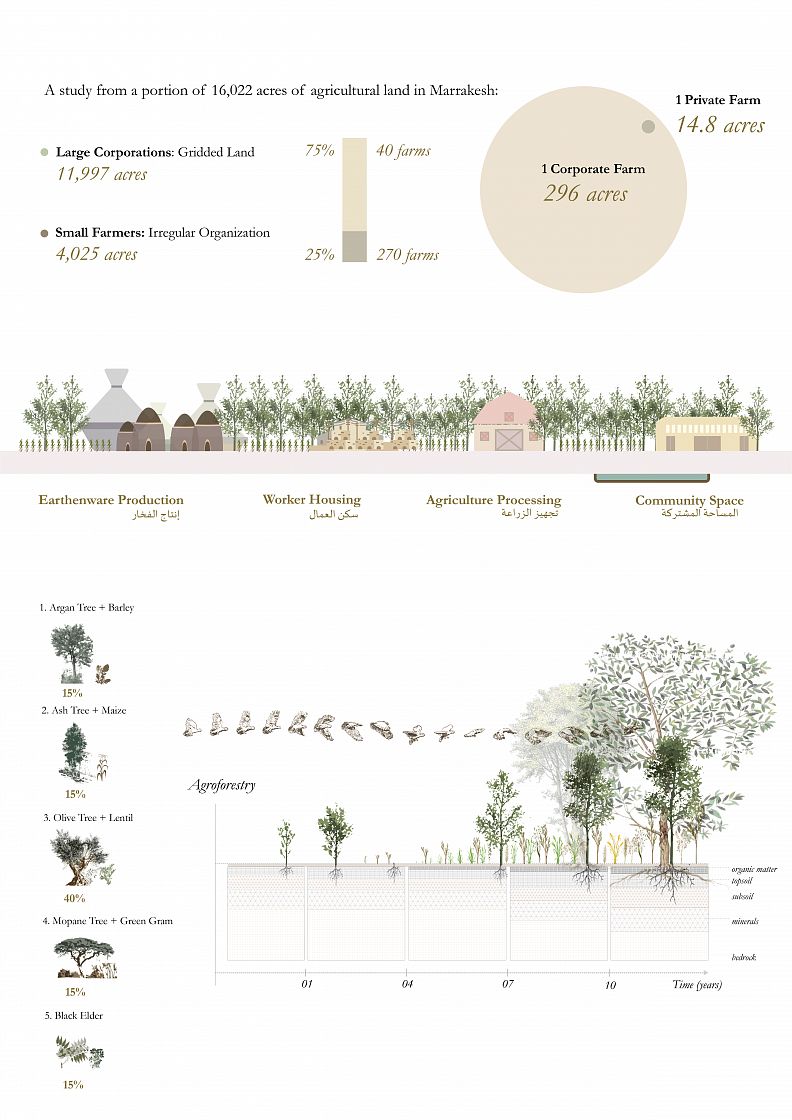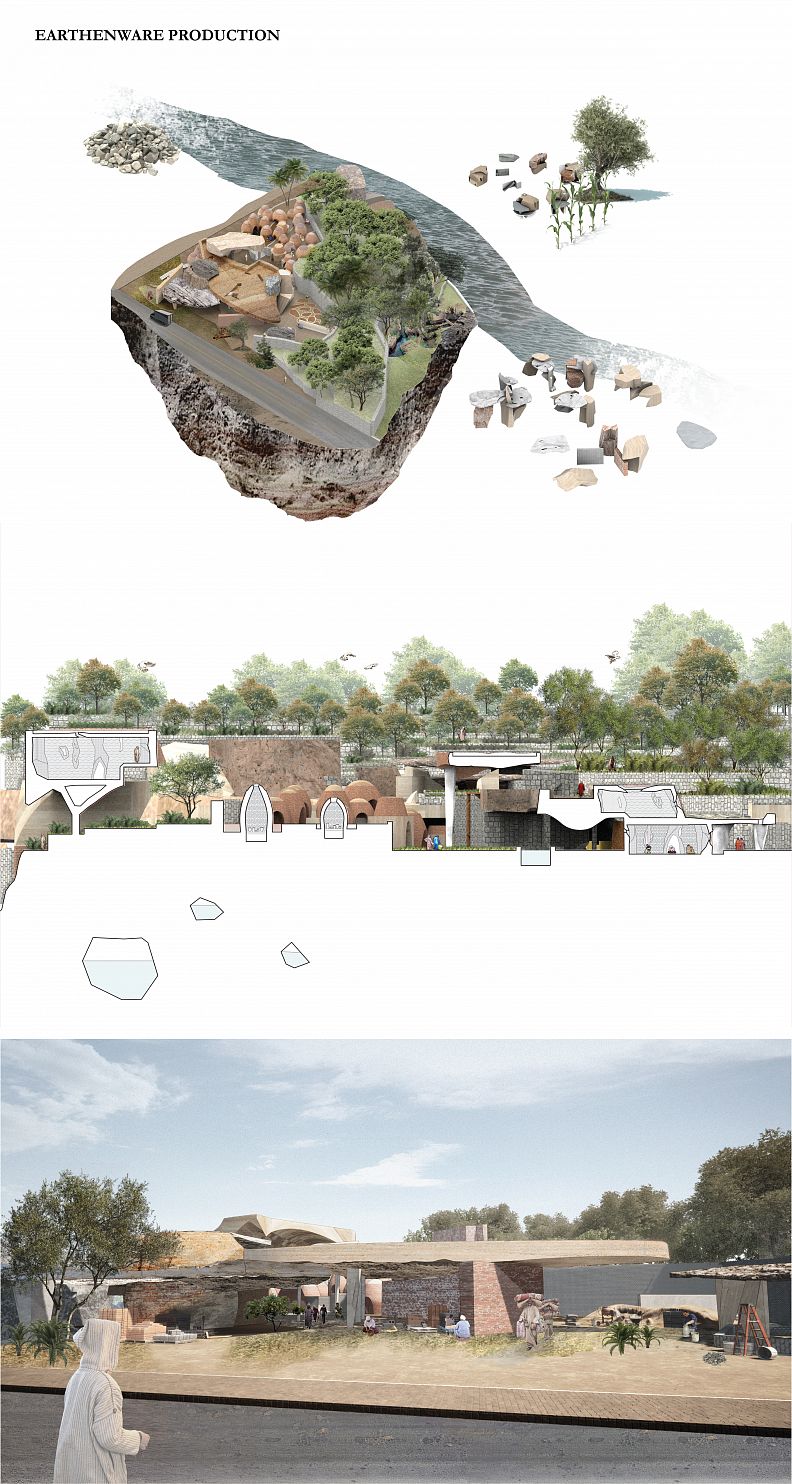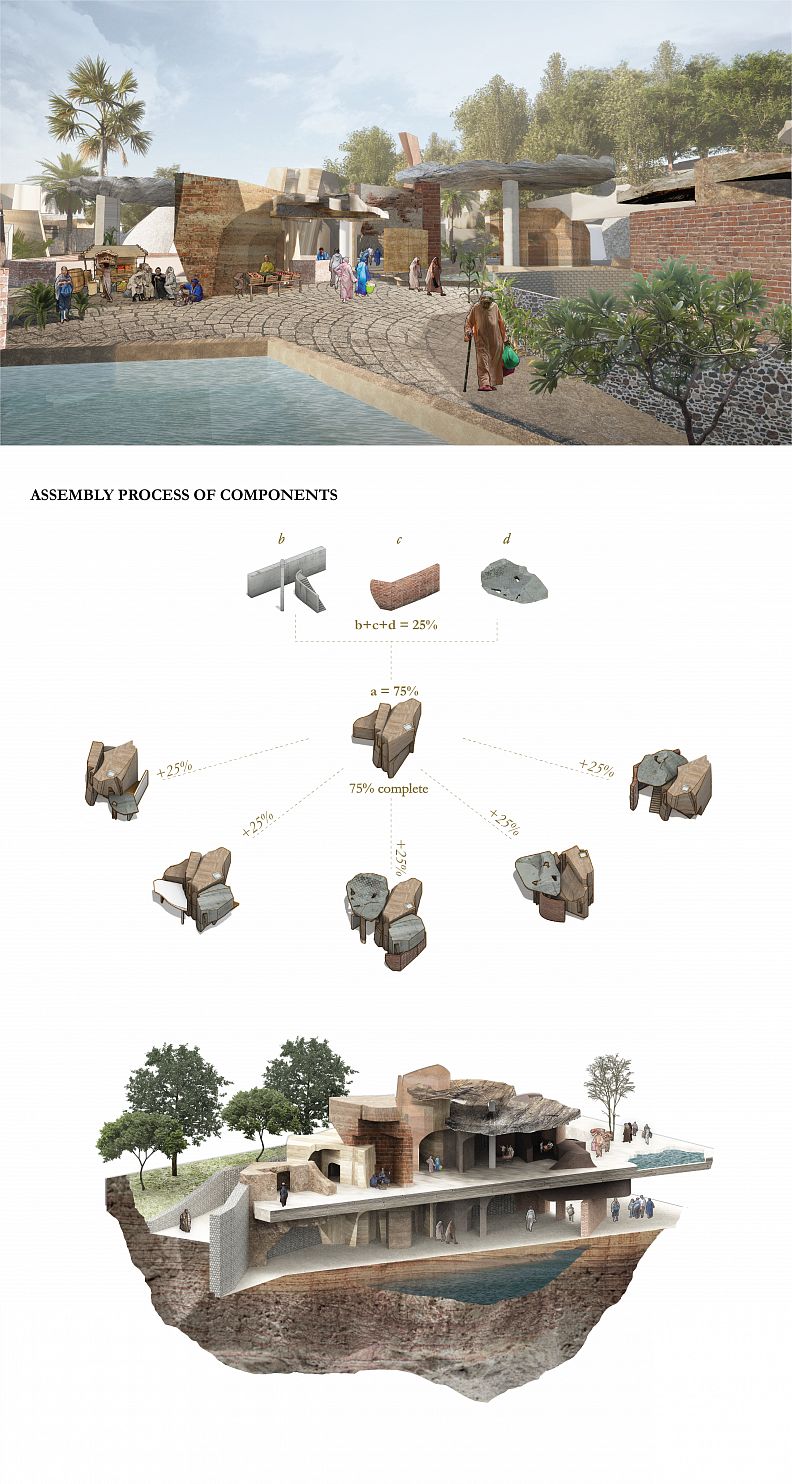An Exquisite Corpse: Reclaiming Agricultural Land in Marrakesh

Project idea
The narrative is characterized by post-colonial ownership of agricultural land in Marrakesh, Morocco, where most land is owned by external corporations and the remainder is irregular clusters of local farms at a ratio of 1 corporate farm to 20 local farms. The aim is to allow local farmers to self-sustain through natural means and allow for multi-generational growth across housing, agriculture, water, and community.
Project description
In response to the conditions of agricultural land ownership and soil conditions, the project is the intervention of a terraced agroforest, housing clusters, clay production and a market to create multiple means of income for local farmers. Conceptually, the exquisite corpse becomes a reference when addressing the diversity on site for both the agroforest and architectural program and construction. This includes an index of construction processes and materials that allow architectural intervention on site to grow over time.
Technical information
The site is set just outside the dense old city of Marrakech, with a river running through the site that is dry during times of the year, and floods during other times of the year. The master plan is treated as a time lapse of growth of the trees, crops, and intensity of architectural intervention. The construction processes are made up of modified topography, pre-cast concrete parts, brick walls, rammed-earth elements, and cast-in-earth planes.
Co-authors
Instructor: Faysal Tabbarah










